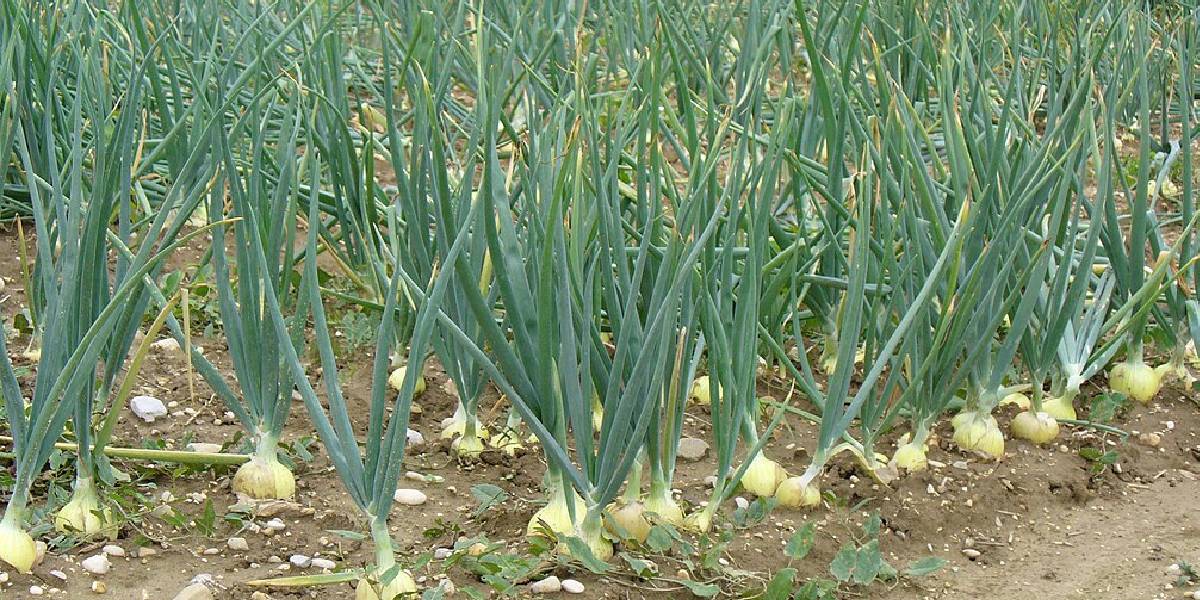Onions are a crucial crop for small and marginal farmers. The crash has pushed many into debt. Distress sales have become common in Kurnool, Alur, Adoni, and other areas.
Published Sep 10, 2025 | 6:40 PM ⚊ Updated Sep 10, 2025 | 6:40 PM

Farmers spend ₹800 to ₹1,000 to produce a quintal of onions.
Synopsis: Vagaries of the monsoon have left Andhra Pradesh’s onion farmers in a lurch. Heavy rains, resultant floods, and moisture dashed the hopes of the farmers, mostly small and marginal. A bleak future awaits them if the government initiatives fail to achieve the desired end. Customers are not spared either. Even as farmers are compelled to sell onions at rock-bottom prices, retail buyers are forced to part with a handsome amount to buy the produce.
The fall in onion prices in Andhra Pradesh’s wholesale markets has left farmers worried.
Kurnool, the state’s largest onion-growing district, has been the worst hit. Farmers who hoped for decent profits are now struggling to recover the expenses.
While heavy rains in September reduced demand, flooded roads kept buyers away from markets. Trading activity slowed to a trickle, and market yards in Kurnool remained deserted for days.
Additionally, high humidity and continuous showers damaged stocks. Traders avoided bulk purchases, fearing spoilage. Consumers, too, turned to non-perishable goods, adding to the slump in demand.
Rains also delayed harvesting. When the weather cleared, arrivals surged, sending prices tumble to just ₹200–400 a quintal. Farmers, who expected ₹1,500–2,000 per quintal, saw their hopes collapse, and now stare at heavy losses. They had spent ₹800 to ₹1,000 to produce a quintal of onions.
Onions are a crucial crop for small and marginal farmers. The crash has pushed many into debt. Distress sales have become common in Kurnool, Alur, Adoni, and other areas.
Ramesh, a farmer from Kurnool, summed up the plight: “We spend ₹1 lakh per acre. Now we get only ₹200–400 per quintal. The Minimum Support Price of ₹1,200 barely covers the costs. There is no profit, only loss.”
According to official data, Andhra Pradesh is India’s 10th largest onion producer. In 2023-24, it harvested 5.12 lakh metric tonnes from 21,870 hectares, with an average yield of 23.5 tonnes per hectare. Kurnool, Anantapur, and Chittoor are the main growing districts in the state. The state contributes 1.7% of India’s onion output, valued at around ₹600 crore, based on average mandi (market) prices of ₹1,169 per quintal in mid-2025.
As prices nosedived, farmers staged protests in several markets demanding a Minimum Support Price (MSP) of ₹2,000 per quintal. Responding, Chief Minister N Chandrababu Naidu held a review on 29 August and announced emergency measures.
The government began procurement at ₹1,200 per quintal. Community halls were made available to dry onions and prevent spoilage. Stocks were sold directly to consumers through Rythu Bazaars. By Tuesday, 9 September, 580 metric tonnes had been procured.
Agriculture Minister K Atchannaidu said the move brought “some relief,” though he admitted the problem remained “huge.”
Currently, wholesale prices hover around ₹634 per quintal, with only top-quality onions fetching the MSP of ₹1,200. To prevent future crises, the government plans to expand Rythu Bazaars from 150 to 200, create new cold storage facilities, and strengthen logistics to reduce post-harvest losses.
A six-member Cabinet panel will study price collapses in onions and other crops and recommend MSPs. “We must stop distress sales. Procurement alone is not enough. Long-term reforms are needed,” the chief minister said.
The government had earlier this year intervened to support mango farmers. In May, Totapuri mango prices crashed to ₹2–6 per kg due to oversupply, early harvests, and weak demand from pulp industries.
The state launched a Market Intervention Scheme in Chittoor, Tirupati, and Annamayya districts. It procured 6.5 lakh tonnes at ₹8 per kg from processing units, adding a ₹4 subsidy to ensure farmers received ₹12 per kg. Payments were made directly through DBT. The ₹260 crore scheme ran until August, stabilising orchard incomes. The government also restricted cheaper mango imports from other states.
The Opposition parties used the onion crisis to attack the ruling coalition. YSRCP president YS Jagan Mohan Reddy accused the government of “doing nothing” as prices collapsed. He said consumers were paying up to ₹35 per kg while farmers were left in the lurch.
“There is no relief for the farmer selling onions or the consumer buying them,” he alleged, adding that his government had procured 9,025 tonnes during its term.
State Congress president YS Sharmila, too, joined the attack. On 8 September, she visited Kurnool with her son YS Raja Reddy and met farmers in the markets. She said farmers were spending ₹1.2 lakh per acre but were forced to sell at ₹600 per quintal. She claimed prices had reached ₹4,500 per quintal under the previous government.
“Naidu’s rule has ruined farmers,” she declared.
While farmers sell onions at rock-bottom prices, consumers are paying steep rates. In Rythu Bazars, good-quality onions are sold at ₹50 per kg, while local markets charge ₹60–70 per kg. Both farmers and consumers are furious, blaming middlemen for cornering the gains.
The onion crisis has once again exposed the fragility of the state’s farm economy. For farmers, it has meant despair. For consumers, it has meant higher bills. For the government, it has become a political test.
(Edited by Majnu Babu).
